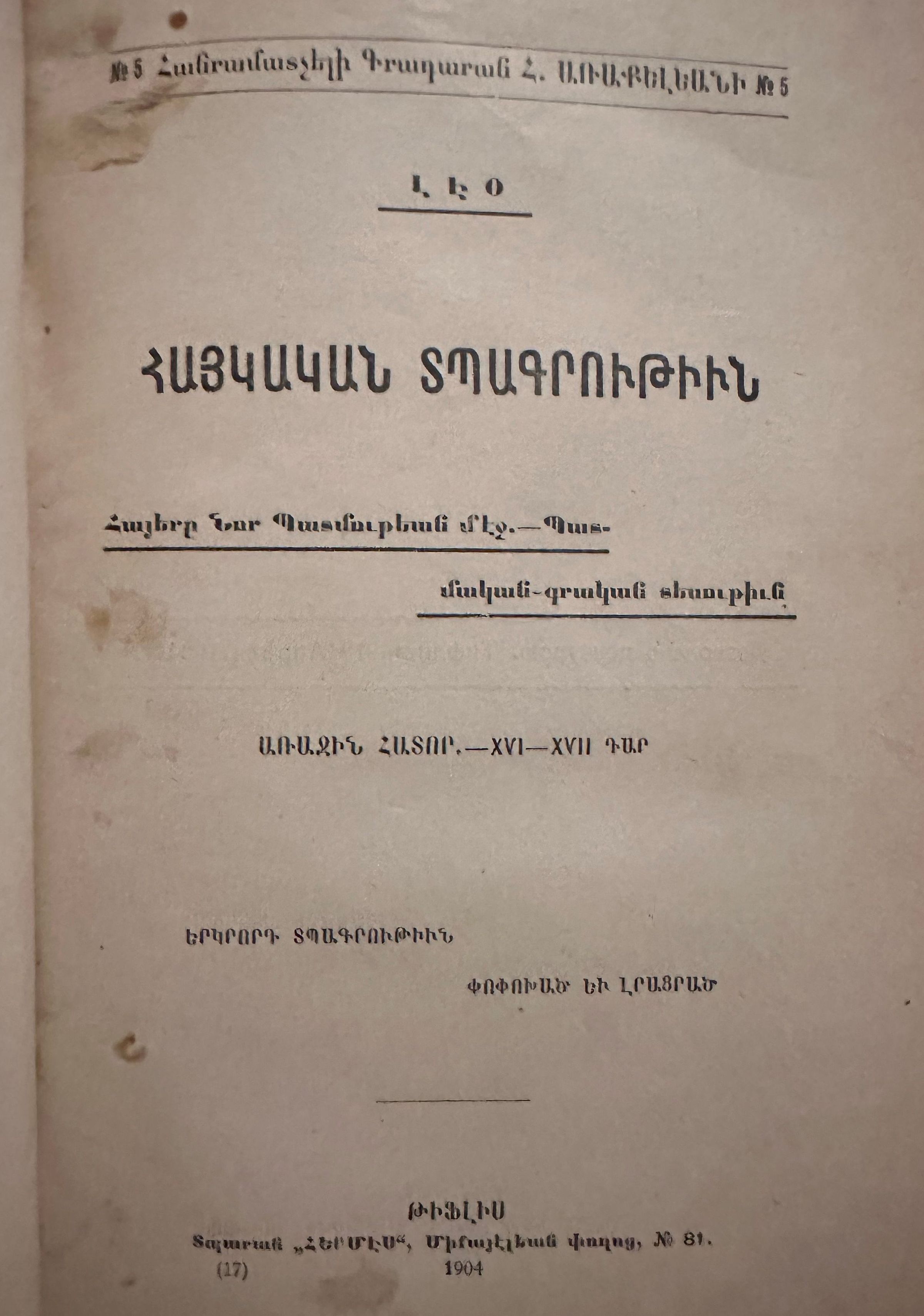Name/Title
Haygagan Dbakrutiun (Leo, 1904)Secondary Title
Հայկական տպագրութիւն. History of Armenian Printing.Description
The first edition of Leo's work on the History of Printing was published in 1901. However, the length of the new edition is no longer the same. He made numerous changes, adding new chapters and expanding the historical discussions to ensure that the proportions of the various parts of the work are preserved.
The first edition of the book has a forward with includes the following:
When this work was being published in parts in the newspaper "Mshak," I often heard remarks from many people that its content did not correspond to its title. For this reason, I find it necessary to offer some explanations to my readers.
Every work has a certain plan. My plan was to present stories from our past intellectual, cultural, and political life. But I titled this work "Armenian Printing" because, as the reader can see, printing is the central theme around which my stories revolve.
If we view the printing press merely as a workshop and follow its slow and almost insignificant progress, we would have very little to say, especially since the Armenian printing press, as a workshop, already has its history, though we must admit it is an incomplete and flawed history (The "History of Armenian Printing," Venice 1895). However, the printing press is not just a workshop; it is the soul of literature. Without it, it would be impossible to even imagine everything we have today. In my work, I have already emphasized a very characteristic feature of our nation—the fact that the Armenian printing press spread Armenian literature to various parts of the world. Wherever there was a printing press, literature also began to flourish.
With this perspective on the printing press, I aimed to recount the history of the Armenian book from the time it began to reach the masses through printed media. In following our literature, I could not help but follow our life as well, because these two—life and literature—cannot be separated. I felt it my duty to illuminate life as much as possible, to speak in detail about the phenomena that influenced it, in order to more clearly depict the circumstances of our progress.
This was my plan. Some told me that it was not a scholarly approach. So be it. I never intended to produce a scholarly work if that meant a dry and dull narrative. If scholarly work requires being confined within the boundaries of a chosen field, assuming that the reader already knows the rest, then no, that was not my goal. Our people—who were my primary audience—know very little about their past. My aim was to help them as much as I could by providing a narrative that is accessible and alive.
I do not know how well I have succeeded in this. Keep in mind the immense effort that such a work requires, and the limited resources we have. We do not have a rich library where one can easily find what is needed. To find books, one must run from one place to another, ask various individuals, and face different challenges. Under such circumstances, it was impossible to produce a completely comprehensive work, and I, more than anyone else, am well aware of the shortcomings of my work. But I can also say that I have spared no effort to minimize those shortcomings as much as possible. I have considered it my duty to speak as the facts dictate, and in my reasoning and conclusions, I have based everything on facts and history.Book Details
Author
LeoEdition
SecondPublisher
HermesPlace Published
* Untyped Place Published
TbilisiDate Published
1904Created By
garenkazanc@hotmail.comCreate Date
October 15, 2024Updated By
garenkazanc@hotmail.comUpdate Date
October 18, 2024
